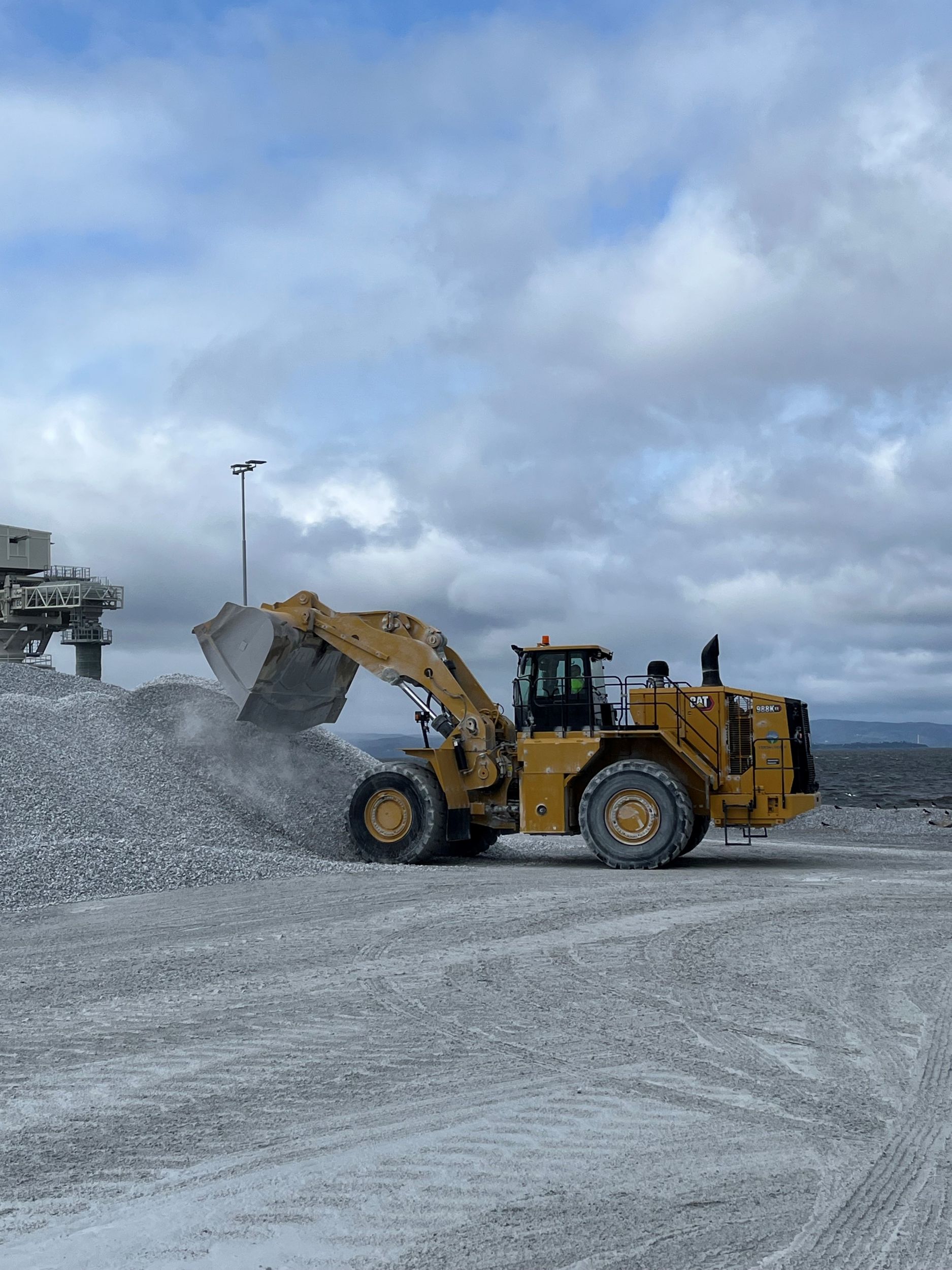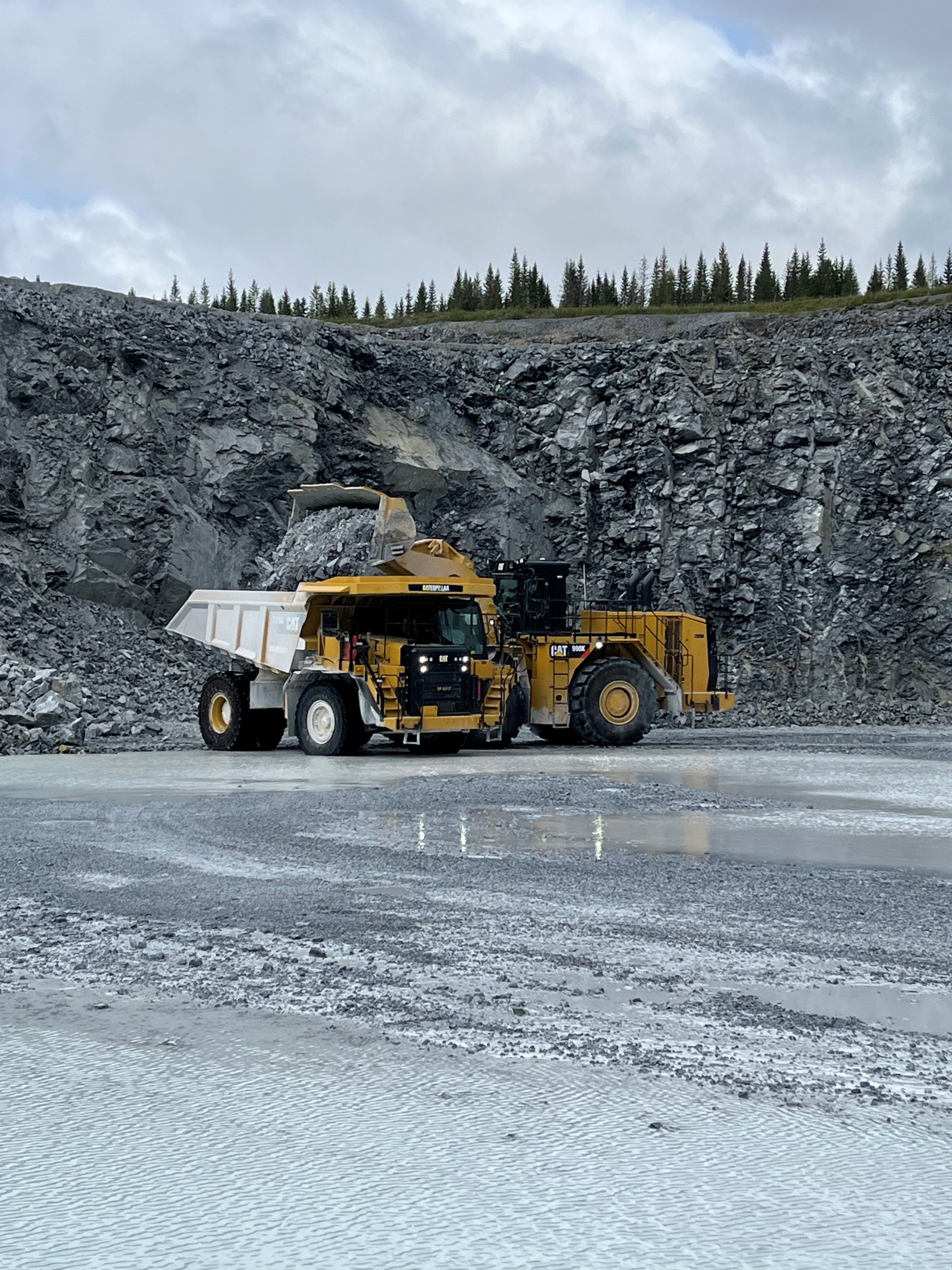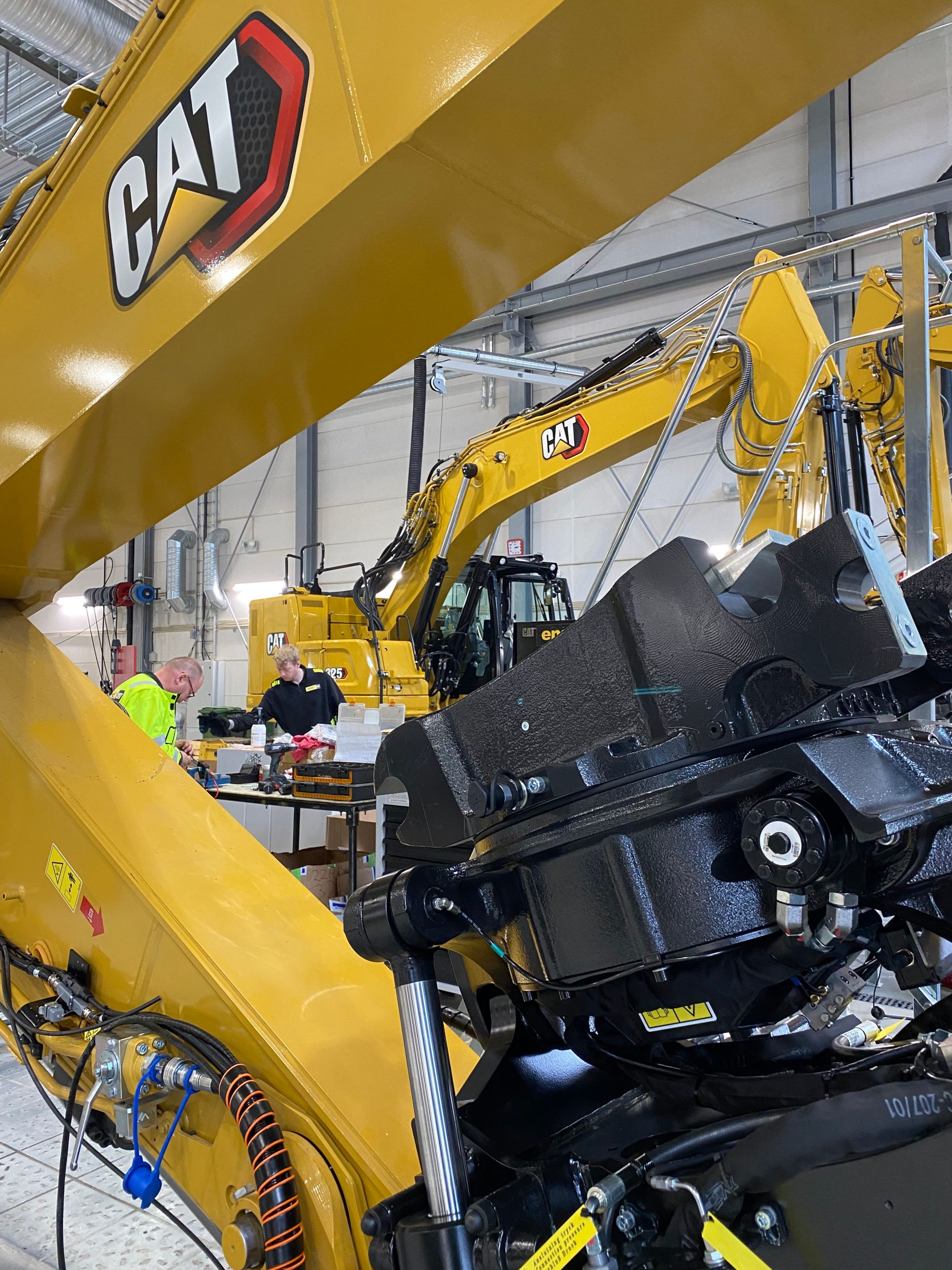

Sign In
Welcome! Sign In to personalize your Cat.com experience
If you already have an existing account with another Cat App, you can use the same account to sign in here
Register Now
One Account. All of Cat.
Your Caterpillar account is the single account you use to log in to select services and applications we offer. Shop for parts and machines online, manage your fleet, go mobile, and more.
Account Information
Site Settings
Security
Rich rebuild returns
This article first appeared in Aggregates Business Europe magazine, issue dated July/Aug 2023. | Posted: Nov 1, 2023
Dealer-led or original equipment manufacturer-certified machine rebuilds can offer quarrying customers a highly attractive alternative to investing in new models. Aggregates Business editor Guy Woodford learned this first-hand during a recent trip to Norway with Caterpillar.

There is more to life than the next new thing. Just ask Verdalskalk. The longstanding Caterpillar limestone quarrying customer based in Verdal, in Norway’s Tromsdalen region, has rebuilt five of its Cat® fleet over the years - 990, 990K, 980H wheeled loaders, and 775F and 775G off-highway trucks. Carried out earlier this year, the Cat 990K was Verdalskalk’s most recent dealer-led machine rebuild.
As Per Olav Listou, key account manager for Pon Equipment AS, Caterpillar’s Norwegian dealer, explains during Aggregates Business’ trip to see Verdalskalk’s impressive operations an hour-and-a-half’s drive north of Trondheim, a dealer-led machine rebuild typically costs 35% to 40% of a new machine (not Cat Certified). Rebuilds are commonly done at 15,000 hours, depending on the machine and condition, equating to the end of a machine’s first life.
Verdalskalk rented a 988K to replace its 990K during its rebuild. All components were tested to Caterpillar standards, with the rebuilt 990K gaining a new 5,000-hour Extended Protection Plan with a Customer Value Agreement (CVA) - a total repair and maintenance contract.
Verdalskalk’s 990K rebuild was done at Pon Equipment’s new workshop in Trondheim, which opened in January 2023. The 990K was the first machine rebuilt in the new facility, with the project taking two months. The workshop was officially opened on 25 May this year.
Listou notes that operators have a say in the machines that have been rebuilt. For example, they know how the machines handle and if something needs replacing in the cab.
Rebuilds are generally done due to cost (cheaper than buying a new unit) or to access new machine technology.
The Cat 990K rebuild followed the November 2022 rebuild of Verdalskalk’s Cat 988H large wheeled loader. The rebuild included a new engine, bearings, injectors, and gearbox. It is giving Verdalskalk another 6,000 to 7,000 hours out of the machine.
Tromsdalen quarry, Verdal site manager, Kjell Ivar Nonset, says the 988H operator appreciates the higher comfort level after the rebuild because the machine handles better. Nonset is hosting Aggregates Business’ visit on 31 May 2023 alongside colleagues, maintenance manager Petter Jermstad, and mechanic Lars Vergard Hårberg.
Commenting on the Cat 988H rebuild, Jermstad says: “We had a lot of meetings with Pon Equipment to get the correct solution and understand what work was important to carry out.”
Hårberg adds: “Pon Equipment is easy to work with; we communicate well. The Pon Equipment service technician lives locally in Verdal.”
Pon Equipment has 300 service technicians. Most of them work from home to be conveniently located to support the customers. Service calls include free mileage within a 50km radius. “What I like about Cat machines is that they are robust. I like the fact that they can be rebuilt. I think this is a great solution. Not many brands offer that,” says Hårberg.
Verdalskalk was established in 1991 through a merger of the Hylla division of Franzefoss Bruk and Faxe Kalk Norge (formerly Reidar Svendsen & Co) in Tromsdalen and the port of Verdal (Verdal Havn in Norwegian).
Started back in 1897 with the Hylla Kalkverk lime works, today, the NOK 220mn-a-year turnover (€18.86mn) company is a medium-sized family enterprise with around 70 employees distributed between four sites: Tromsdalen (quarry), Verdal Havn (loading facility at the port), Hylla (production facility for high-quality and stable quick lime (CaO)), and a transport department.
The owners of the Verdalskalk production company are Franzefoss Bruk (55%) – owned by Franzefoss Minerals; Faxe Kalk, Denmark (35%) – the Belgian company Lhoist owns FK; and Nordkalk, Finland (10%).
Verdalskalk’s business is based on one of Europe’s purest and largest limestone deposits (CaCO3). The purity and structure of the limestone make it suitable for producing quick lime for all kinds of purposes in various market areas such as industry, agriculture, food, water and sewage treatment, construction products and more. The limestone is particularly suitable for producing PCC (precipitated calcium carbonate) used in environmentally friendly paper production.
The deposit is estimated at 3 billion tonnes of usable limestone down to sea level. The Geological Survey of Norway estimates the total deposit around 7.5 billion tonnes. This makes the deposit one of Europe’s most important carbonate deposits and one of Norway’s most important mineral resources. Verdalskalk is in the process of regulating a quarry that will allow it to extract limestone for 100 years. First, the quarry will be extended across its surface and then will extract deeper down.
At the Tromsdalen quarry in Verdal, day-to-day operations are performed in an open pit with drilling, blasting, loading and transport, and crushing and fractionating limestone to grades based on market needs. Blasting is done two to three times a month, with the site’s monthly limestone product production ranging from 130,000 to 160,000 tonnes, depending on demand. The temperature at the quarry can drop to -30°C in winter, with the snow lasting until the following April.
Verdalskalk has been buying Cat machines since the early 2000s, with 70% of the company’s fleet now Cat. A CVA covers Verdalskalk’s Cat machines except for the older ones maintained in-house by a mechanic.

On a tour of Tromsdalen quarry, Aggregates Business saw the site’s Cat 775G off-highway truck, 775F off-highway truck, 740 articulated truck, 345D excavator, 990 and 990K large wheeled loaders, 988H large wheeled loader, and 906H compact wheeled loader in action. The 906H is equipped with forks, a bucket and snow plough to keep the site clean and clear of snow.
Before leaving the quarry, Aggregates Business briefly chatted with Franzefoss Minerals’ CEO Hanne Markussen Eek, who spoke of how Verdalskalk was keen to reduce carbon emissions at the Tromsdalen site. Among various solutions being investigated are Swedish company Hypex Bio’s claimed more sustainable explosives for blasting in the mining, quarrying, and construction industries. The explosives are said to be free of ammonia, nitrate salts and NOx gas while ensuring no nitrate leeching. They are claimed to generate a more than 90% reduction in CO2 while guaranteeing comparable performance to standard industry explosives. Markussen Eek says Verdalskalk works closely with Hypex Bio’s Norwegian subsidiary, with the company’s greener explosives due to be tested at Tromsdalen quarry this autumn.
At Verdalskalk’s Verdal Havn port facility, a Cat 988K XE large wheeled loader loads ships. It was purchased because it has a higher bucket capacity than the Cat 988H. It also burns 10 litres an hour less fuel than the 988H it replaces. A Cat 988H is used in various supporting roles. A Cat Productivity trial with the 988K XE only started on 31 May. Verdalskalk runs a Scania battery-electric road truck from Tromsdalen quarry to the port as a test pilot. The company is looking to use zero-emission equipment, and Aggregates Business is keen to be updated with the results from both projects.
Commenting on the Cat 988K XE’s performance at Verdal Havn, Geir Ove Guddingsmo, shift leader and machine operator, says: “It is much quieter than the 988H we previously used as the primary ship loader and runs at a lower RPM than a standard machine. Putting its bucket into the material is like a warm knife through butter!”
Verdal Havn’s Cat 988H was rebuilt by Pon Equipment late last year, giving it up to 7,000 hours of additional working life. “It’s been working fine since it came back to us. We use it when we get the bigger boats in,” explains plant manager Elisabeth Wiik Moe. “We have new ship-feeding conveyors that allow us to load 3,000 tonnes of material an hour. We load six to ten ships a month. It takes around 13-14 hours to load a ship with a 28,000-tonne capacity, with the new ship-feeding conveyors halving the time it previously took.”
Around a quarter of Verdalskalk’s annual limestone production (400,000 tonnes) goes to Norcem, a Norwegian cement manufacturer and a subsidiary of Heidelberg Materials. The rest is shipped to other customers. “The 32,000-tonne capacity Norcem ships are the biggest ships we load at Verdal Havn,” adds Wiik Moe.


Later the same day, Aggregates Business visited Pon Equipment’s new 3,500m² facility in Trondheim, where region manager Kenneth Bratseth hosted the magazine.
Replacing a 50-year-old 1400m² site, the new facility is home to Pon Equipment, Pon Energy Rental, Pon Rental, and Sitech. New and used equipment sales and parts, fleet servicing, and machine rebuilds are all carried out onsite.
Bratseth explains that Pon Equipment’s vast customer base stretches 580 kilometres north of Trondheim and more than 150 kilometres south of the city.
Verdalskalk’s Cat 990K was the first machine rebuilt in the new facility. “It was super well planned,” says Bratseth. “Three mechanics, including a trainee mechanic, were allocated to the project under the supervision of the workshop manager. As the work progressed, decisions were made on what to keep and replace. This involved constant communication with the customer. The only big challenge with this job was the axles, where some metal particles had shattered. Replacement axles are not normally kept on our shelves. The project represented 600 hours of work and was completed on time.”
Bratseth notes Pon Equipment’s 40 years of rebuilding experience. The first machine the company rebuilt was a Cat D8 dozer in 1984.
He continues: “The viability of a rebuild depends on the age of the machine and the hours on the clock. They are usually done on Stage IV or Stage V emissions-compliant machines.”
Pon Equipment recruits young third-year college mechanics who follow a year of workshop-based training. They are usually retained permanently and thrive, with some promoted throughout the organisation.
“In addition to rebuilds, machines are serviced in the workshop, and new machines are prepared for customer delivery,” Bratseth adds. “Forty mechanics work in the region, mostly based at home with their van to be close to customers. Most Cat genuine parts are available from us within 48 hours.” AB
CONNECT WITH US
In person or online, we're here to help you find the answers you need. Reach out to your local Cat dealer for advice close to home. Sign up for our newsletter to hear from industry experts. Or keep exploring this site for additional information.




